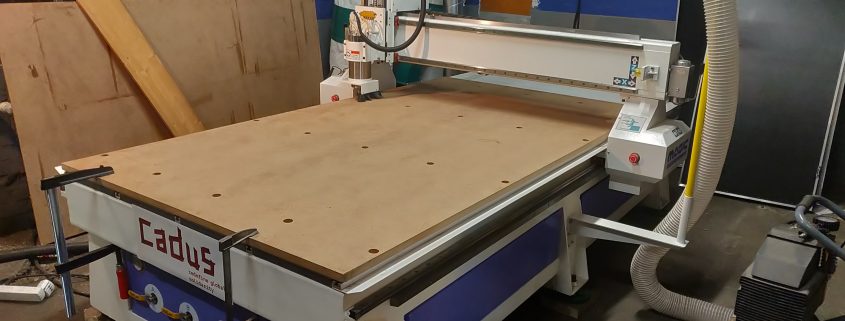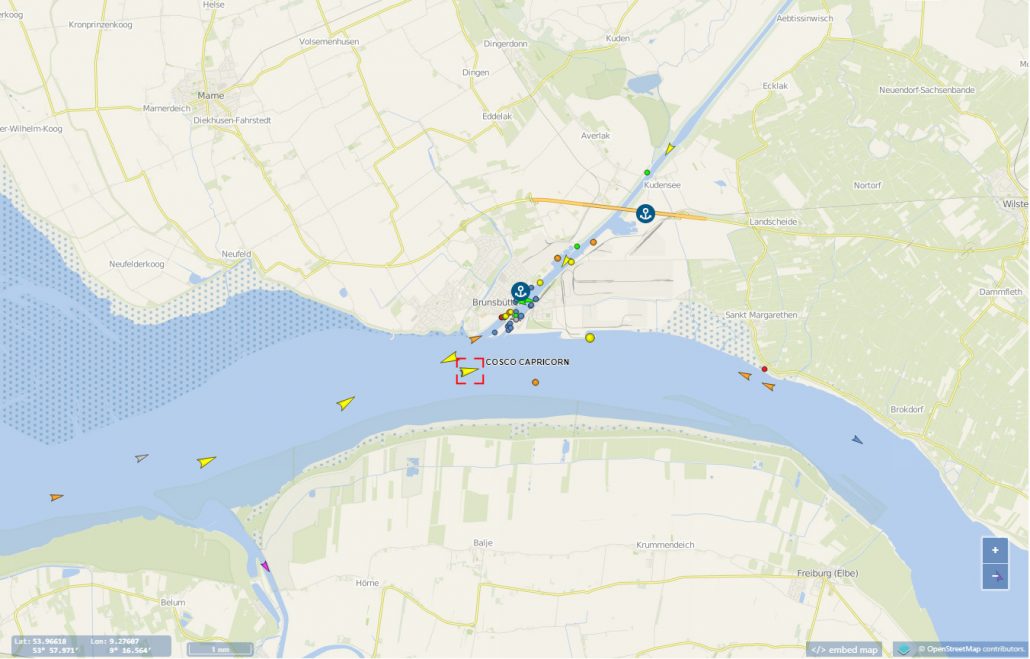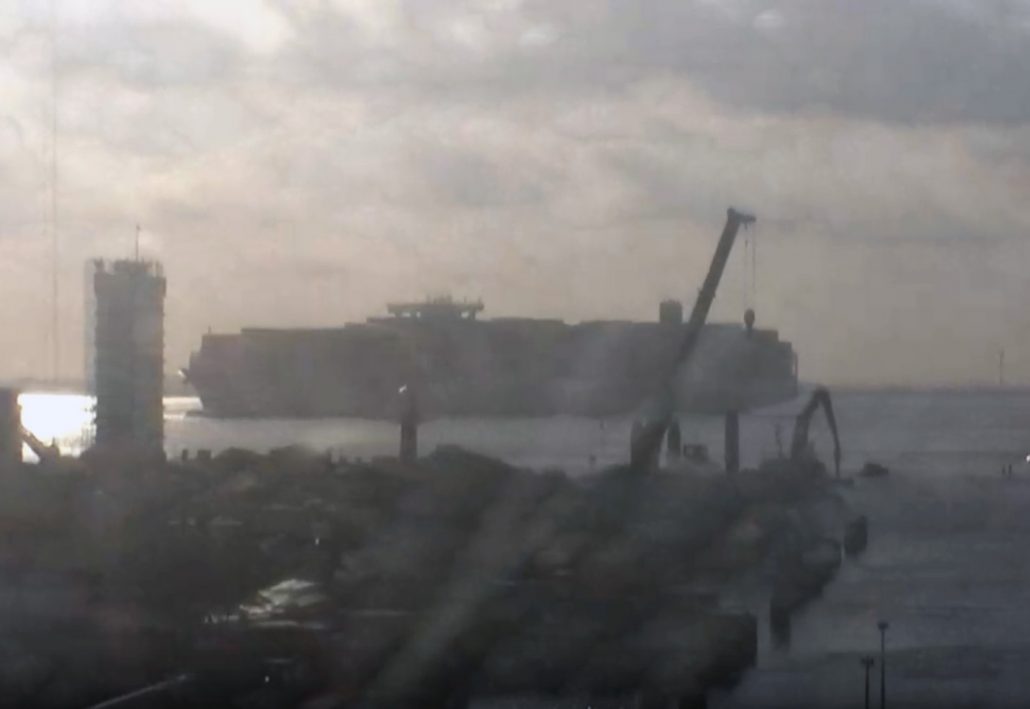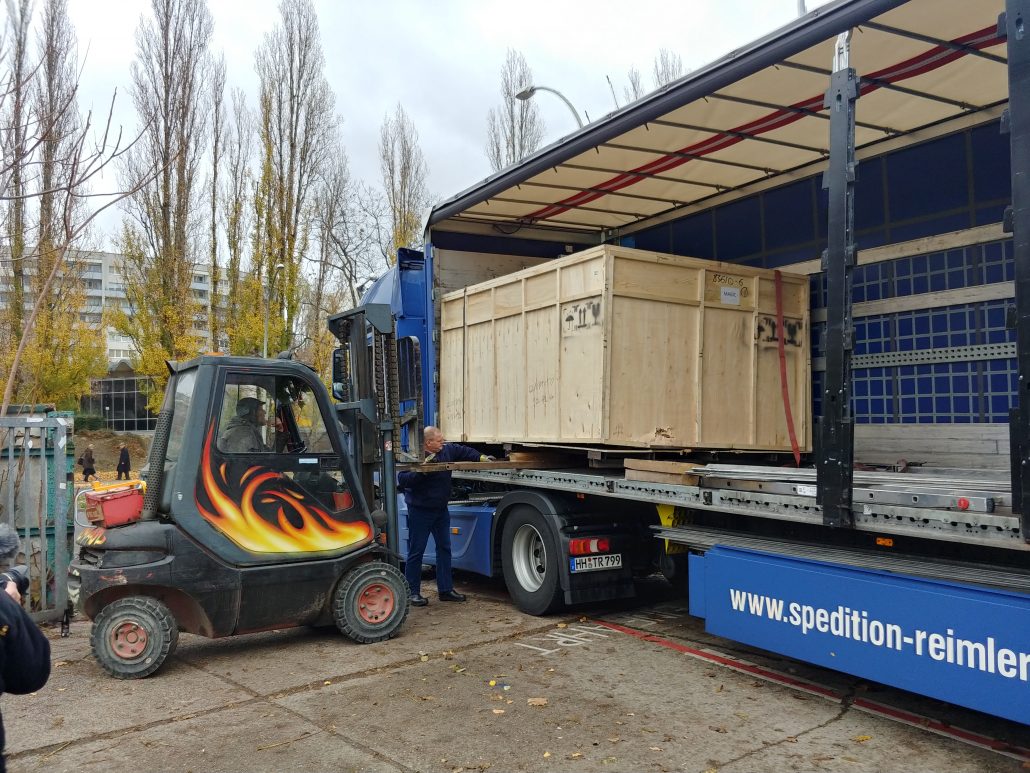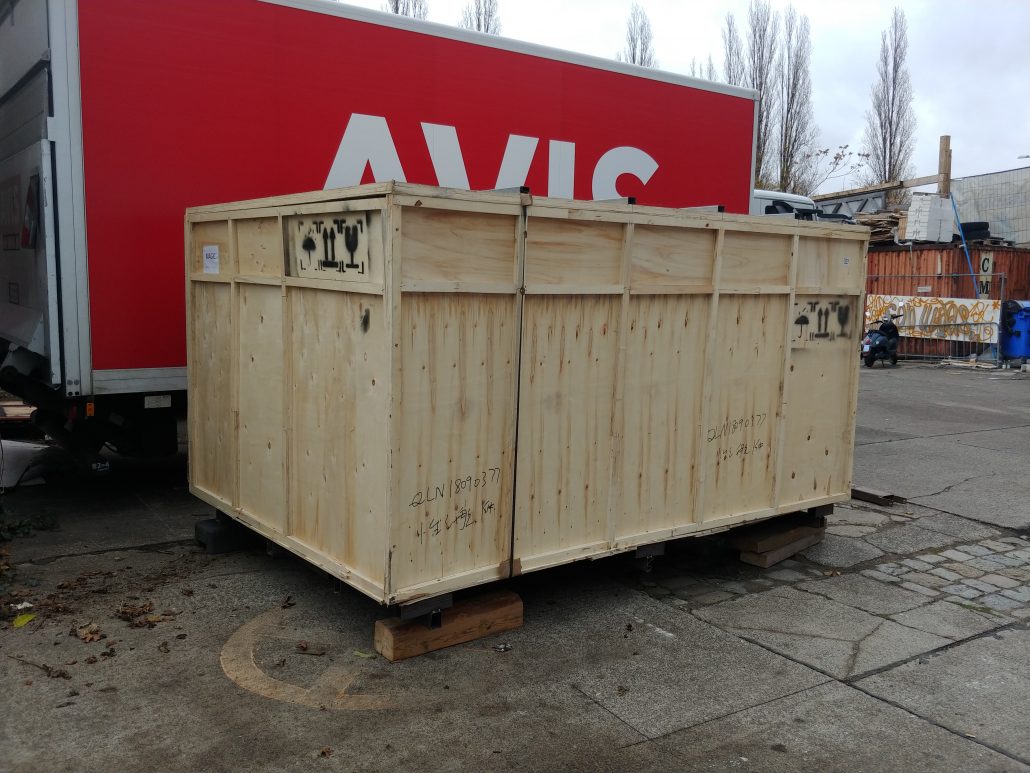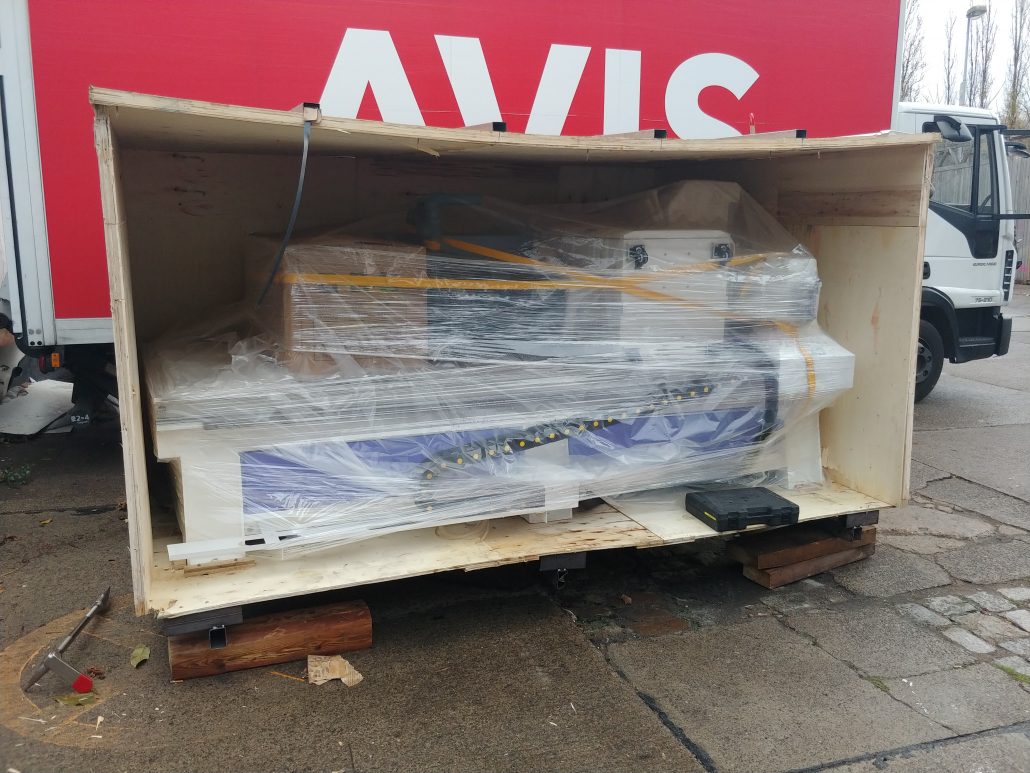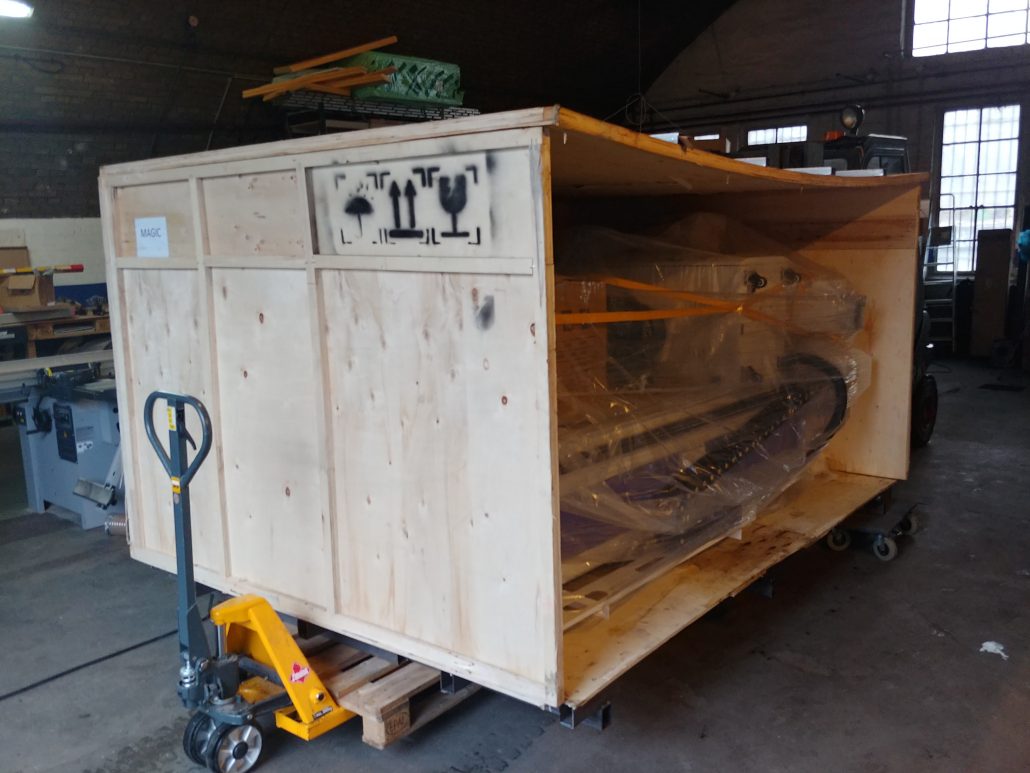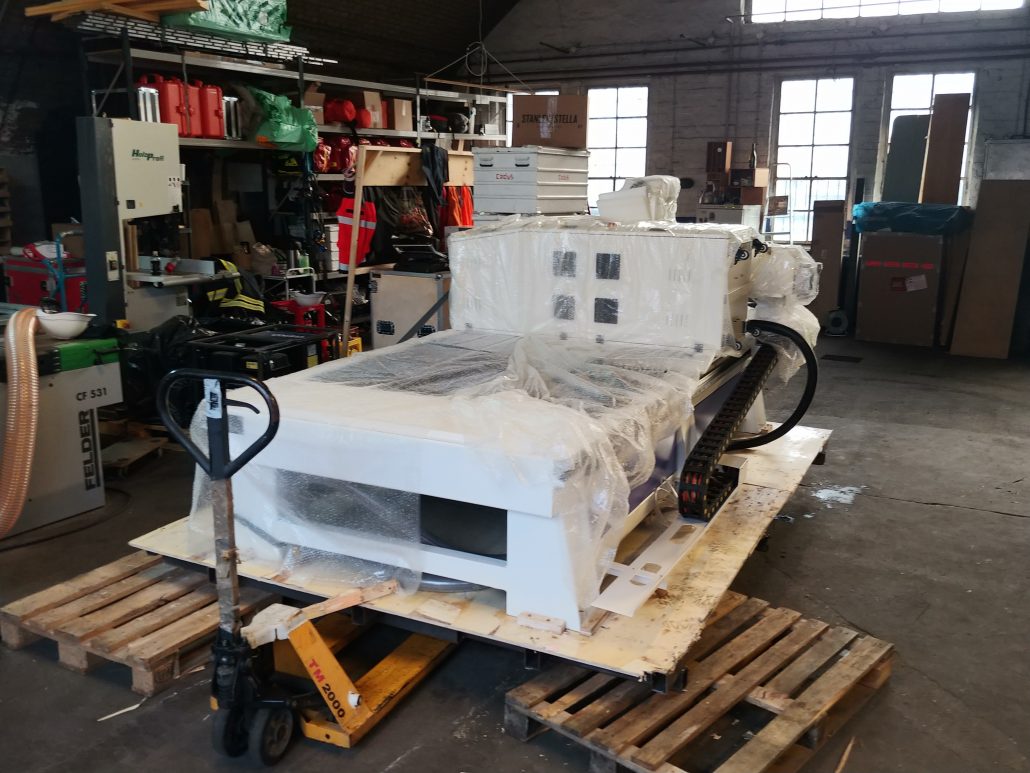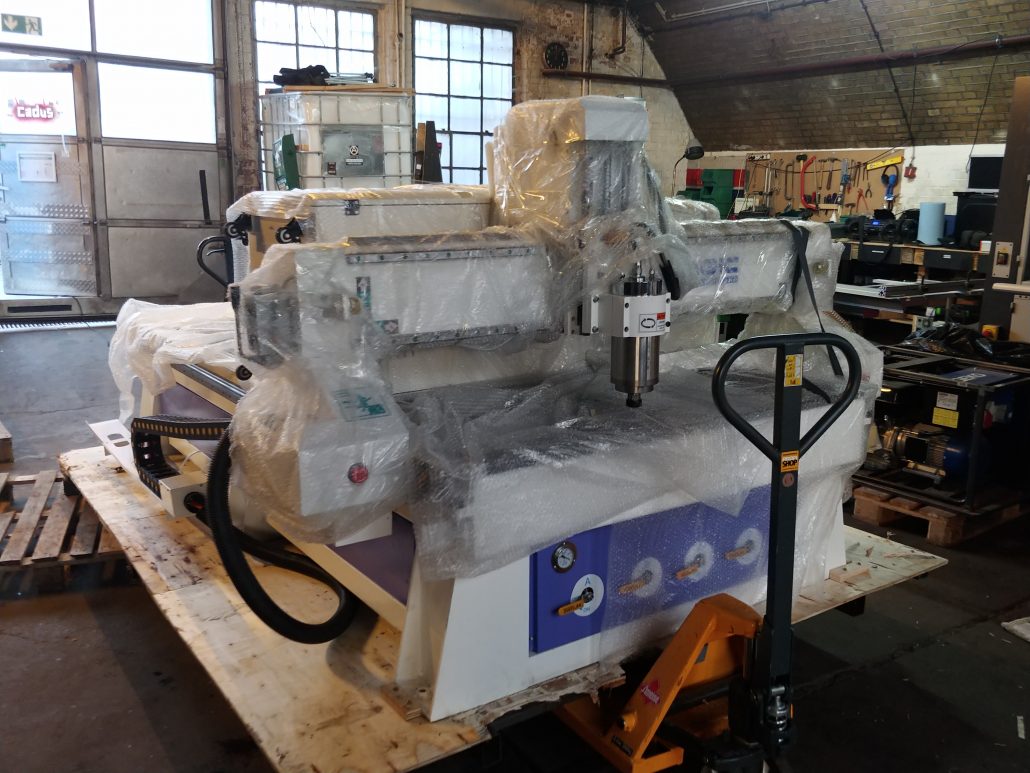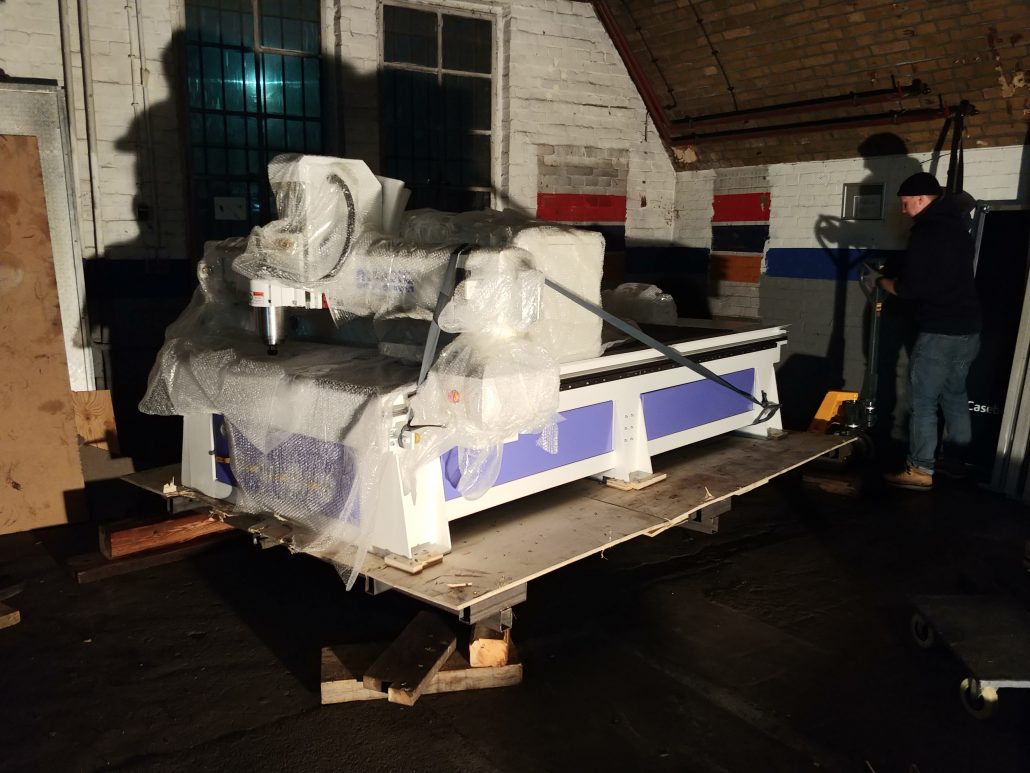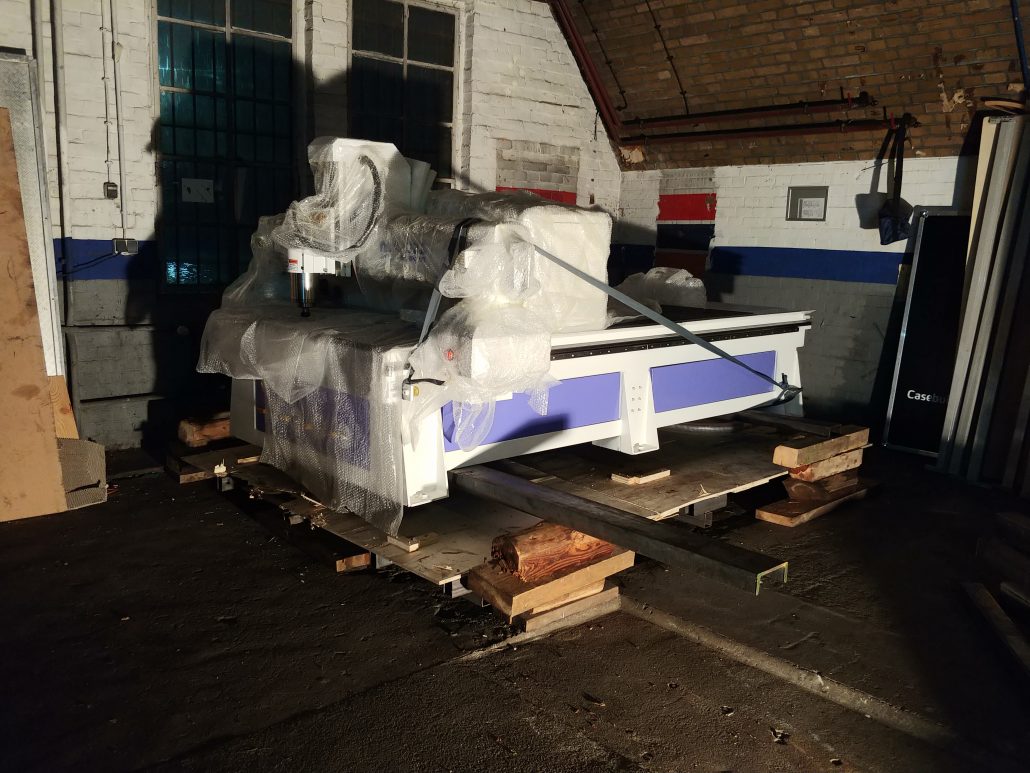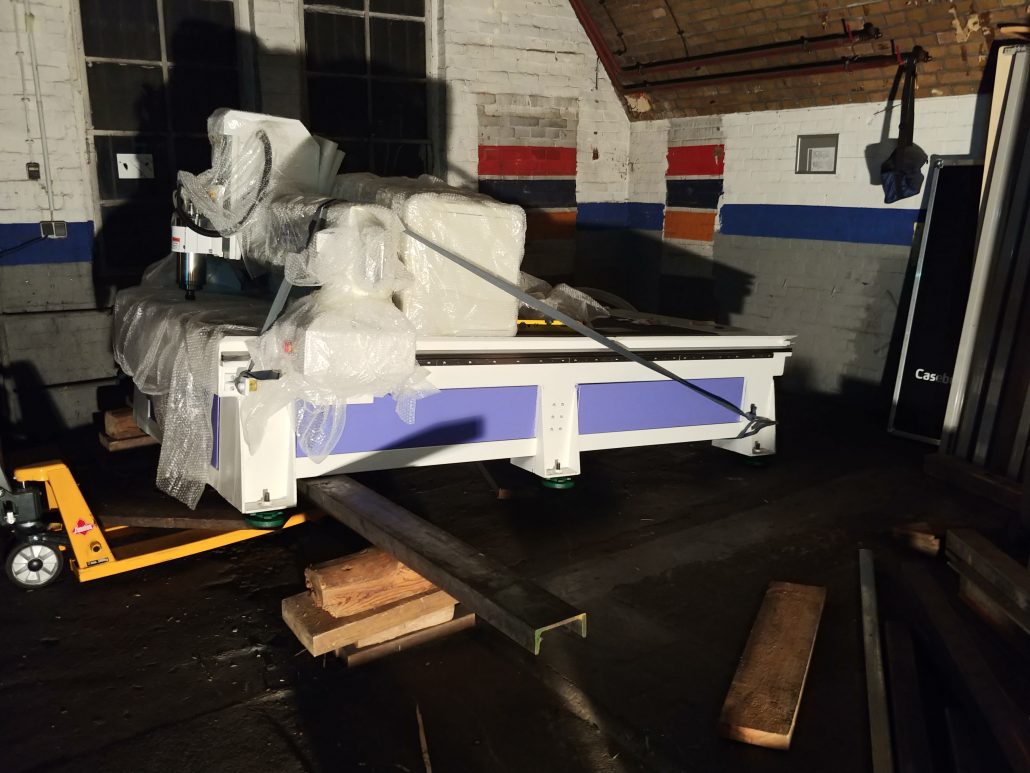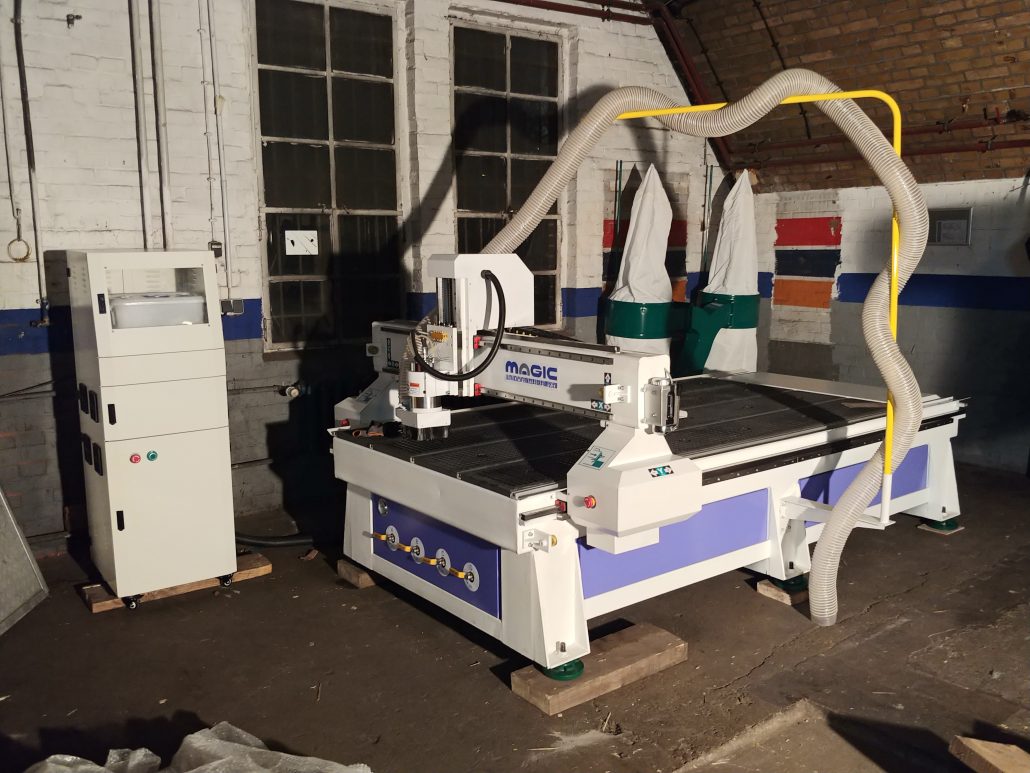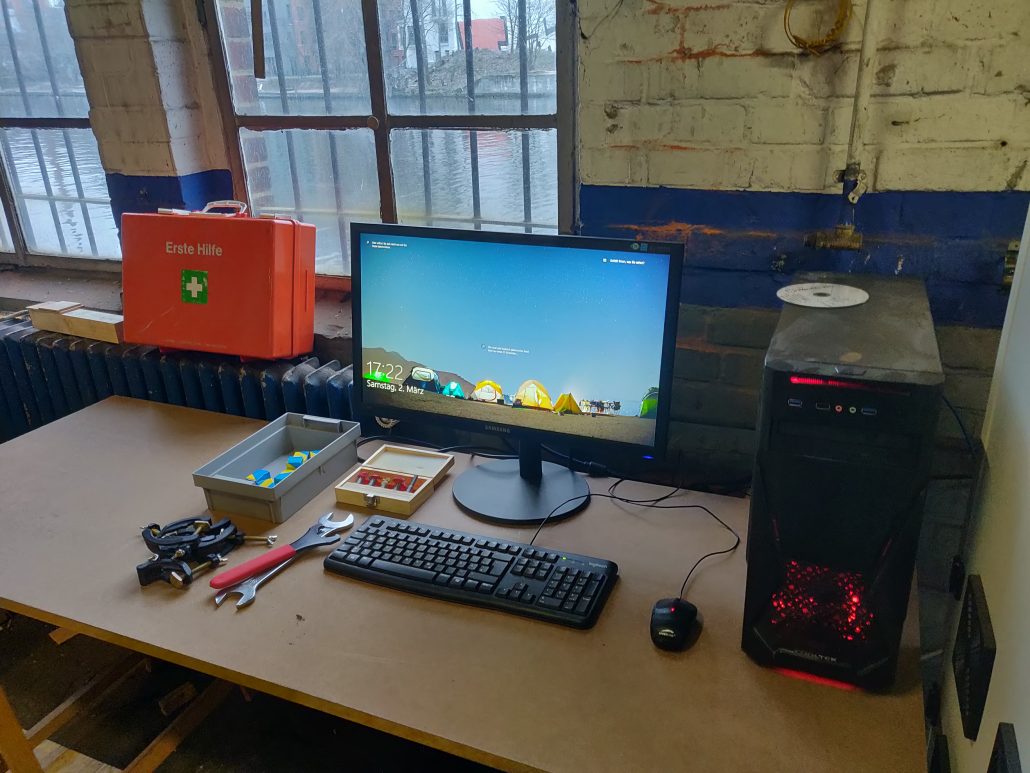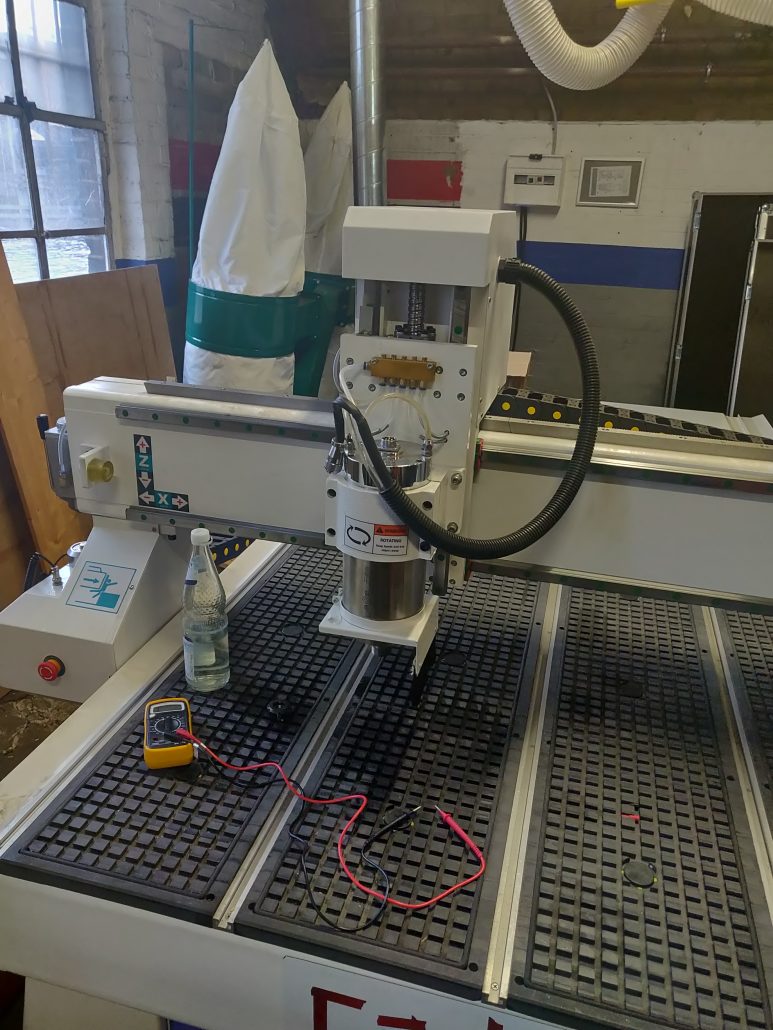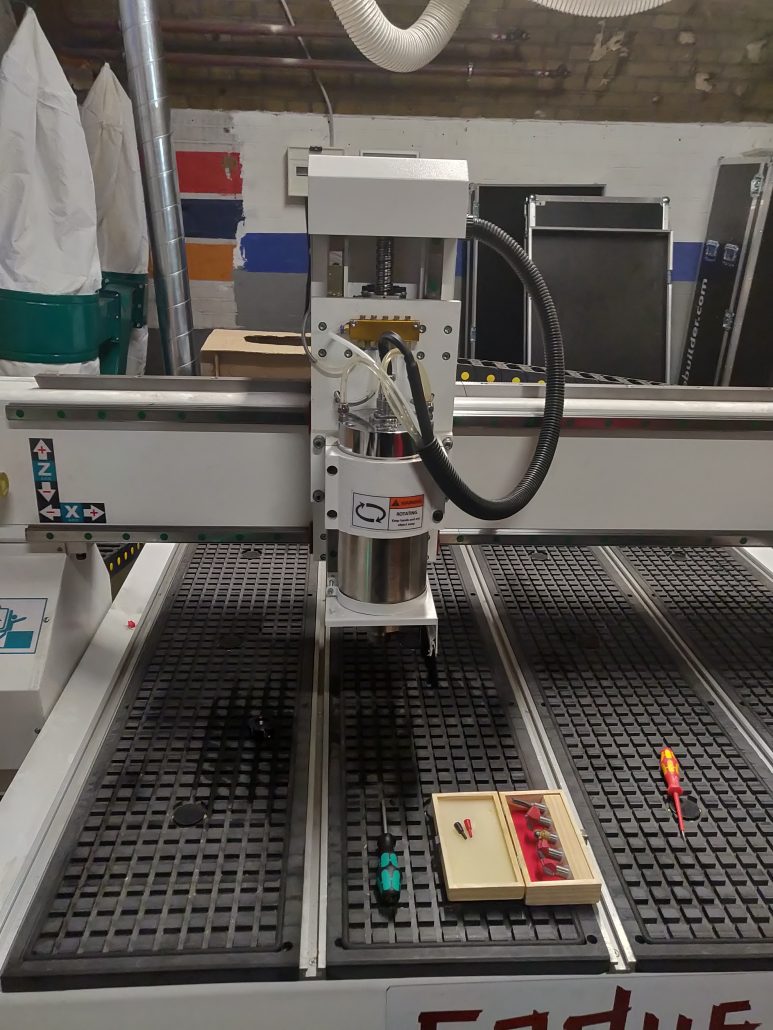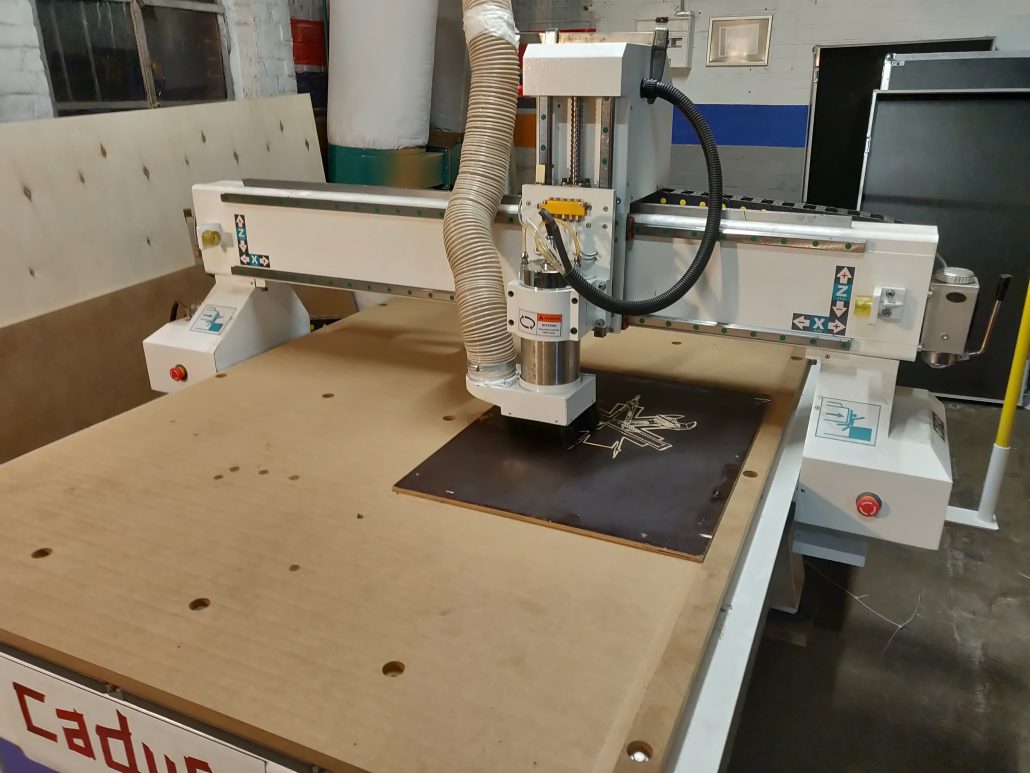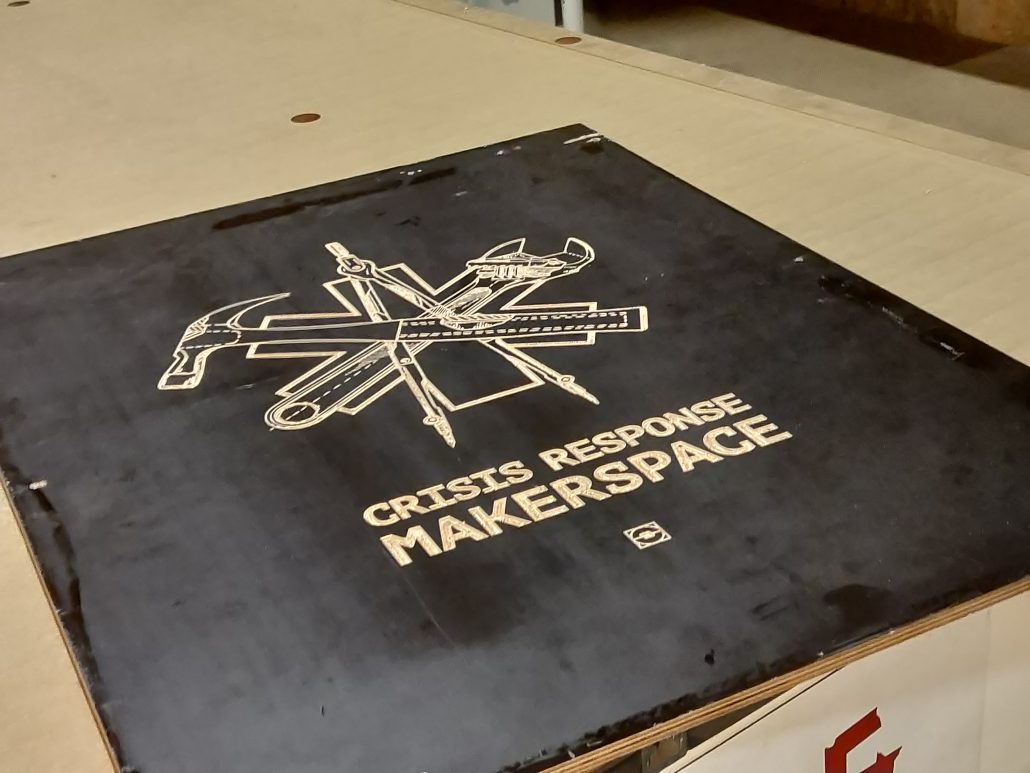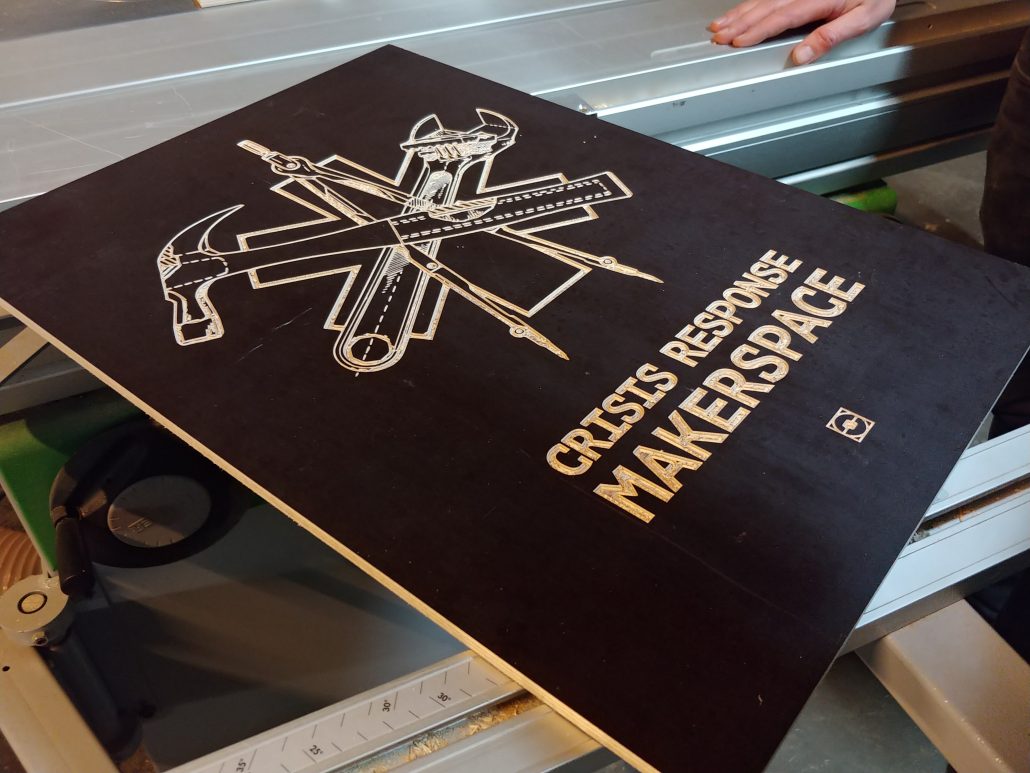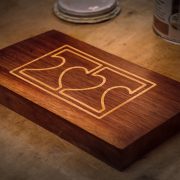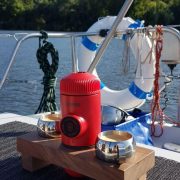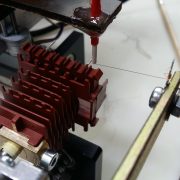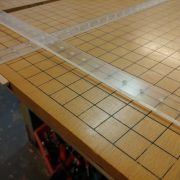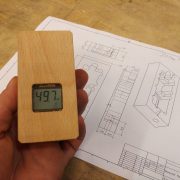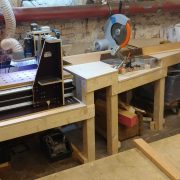big CNC Router
Background
For a potentially upcoming production of kits of the Libreflip book scanner, on which I am working, I looked for suitable CNC routers for processing of sheet goods, but also for possible locations, as c-base does not have enough free space for such a machine.
I got into contact with the organization CADUS e.V., which operates a makerspace in Berlin. The aim of the association CADUS e.V. is to initiate projects for medical care, construction of semi-permanent accommodation, trauma relief and water supply and sanitation in undersupplied and remote areas and crisis regions and to support existing projects. This also happens with the help of their own open source developments, which are developed in the “Crisis Response Makerspace” which is operated for this purpose.
The idea of having a large CNC router for processing sheet goods in the crisis response maker space was met with enthusiasm. I suggested to wait until the planned crowdfunding for the book scanner Libreflip was successful, but CADUS e.V. wished to have the CNC milling machine available for upcoming projects much earlier than I could have managed with crowdfunding. CADUS e.V. therefore offered the immediate coverage of the costs for the purchase of a CNC router.
Production and import of the machine
As part of my research, I obtained offers from various manufacturers, including both North American and Chinese manufacturers. Due to the Jinan High-tech Industrial Development Zone, there is a large number of manufacturers of CNC machines of all kinds in the Chinese county of Jinan who operate several plants there.
The Chinese offers were significantly better, both in terms of assembly effort, but also in terms of delivery costs and price for the machine. The expected shipping costs by sea from China were also significantly lower than from North America.
With the Chinese manufacturer I discussed several possible configurations of the machine in question, especially in the field of machine control I had special requests to be compatible with common control systems established in North America and Europe. I also insisted on importing the high-power electronics, i.e. the output stages of the motors, from South Korea.
Further changes were the addition of a dust extractor, also I changed the offer to the effect that the milling spindle is not air-cooled but water-cooled, since this leads to a longer durability in dusty environments and allows arbitrarily slow spindle speeds.
Before the start of production of this special machine, the manufacturer wanted a down payment, as is commonly the case with such orders. The production itself lasted about 2 months and was delayed by several days of Chinese holidays.
For the transport I had to learn a lot about international trade, which was very interesting. Usually Chinese industrial companies offer a “FOB” deal, which means “Free on Board” and is part of a specific set of contractual clauses in the area of international trade called “Incoterms“. With “FOB”, unforeseen costs can arise in various ways, because the transfer of risk and responsibility from the seller to the buyer occurs at the moment the goods arrive at the port of departure on board the ship.
For the transport I chose a German freight agent, it was important to me that the German freight agent had a loading shed in Qingdao, the seaport closest to Jinan. This way I could suggest a FAS deal with the Chinese manufacturer up to the loading shed, which saved costs. The German freight agent then got an order to carry out a transport based on the Incoterms CPT, which ensured maximum legal certainty and clear, previously known costs.
Of course I followed the ship via tracking websites and was very happy when I saw the ship appear in front of the webcam of the Cuxhaven lock at the right moment.
The arrival of the CNC milling machine on a large truck was exciting, especially as the forklift, borrowed from a neighbour, was operating at its capacity limit.
Installation and start-up
The installation was delayed considerably because at the time of delivery there was no sufficient power supply available. Only after CADUS e.V. had laid a 32A three-phase cable in the Crisis Response Makerspace the installation could really begin.
During the installation several difficulties arose, which could be solved throughout.
- One of the six machine feet was supplied with an M18 instead of an M20 internal thread. To solve this problem, I had to buy a 17.5mm metal drill to bring the core hole to the right size.
- Although I had also ordered a suitable switch cabinet, the manufacturer had not provided any switches or contactors for controlling the dust extraction and the vacuum system, this was also not explicitly agreed in the contracts, but I assumed that this would logically follow from the order as a package offer.
- Complete absence of any documentation or manuals.
- Severely damaged transport packaging
- A loose cable and incorrectly set parameters in the spindle control caused the spindle to malfunction by default. The troubleshooting took several evenings and was time-consuming.
- Lack of installation material for the hose guide of the dust extraction system
- The set-up of the control electronics was a challenge, because the software for the control was only delivered in Chinese, the replacement of the software by a version with English language was not easy and surprisingly time-consuming.
- Clamping devices for clamping milling heads in the spindle were supplied only inadequately.
- The braking resistor for controlling the spindle was not installed, we will have to do this later.
After all these difficulties had been overcome, we installed a sacrificial board made of MDF. This sacrificial board serves several purposes. By milling the board flat, a surface perpendicular to the axes is created, which increases the overall precision of the system. If you accidentally mill too deep, the cutter will mill into the sacrificial plate and not into the machine itself. If this has happened too often, the sacrificial plate can also be flattened by another course of face milling.
In order to produce individual pieces, the workpieces can be fastened well with wood screws in the sacrificial plate. For future series production, the system also includes a vacuum table, which has not yet been put into operation.
Project success and documentation
The machine works within the expected parameters. The production, delivery, installation and commissioning took significantly longer than expected due to the difficulties encountered. CADUS e.V. is satisfied, several members of the organization are currently learning to use CAD and CAM software to use the CNC milling machine. The budget has been met.
As a first test we engraved the Crisis Response Makerspace logo into a remnant screen printing plate.
Technical Data
- Working area 2500 x 1300 x 200 mm
- Drive of the X & Y axis: rack and pinion
- Z-axis drive: ball screw
- weight: 1,2t
- milling spindle: water cooled, 4,5kW
- Spindle collet: ER25
- Chip extraction: 3kW
video documentary
I documented this project in a three-part video series on my Youtube channel.


